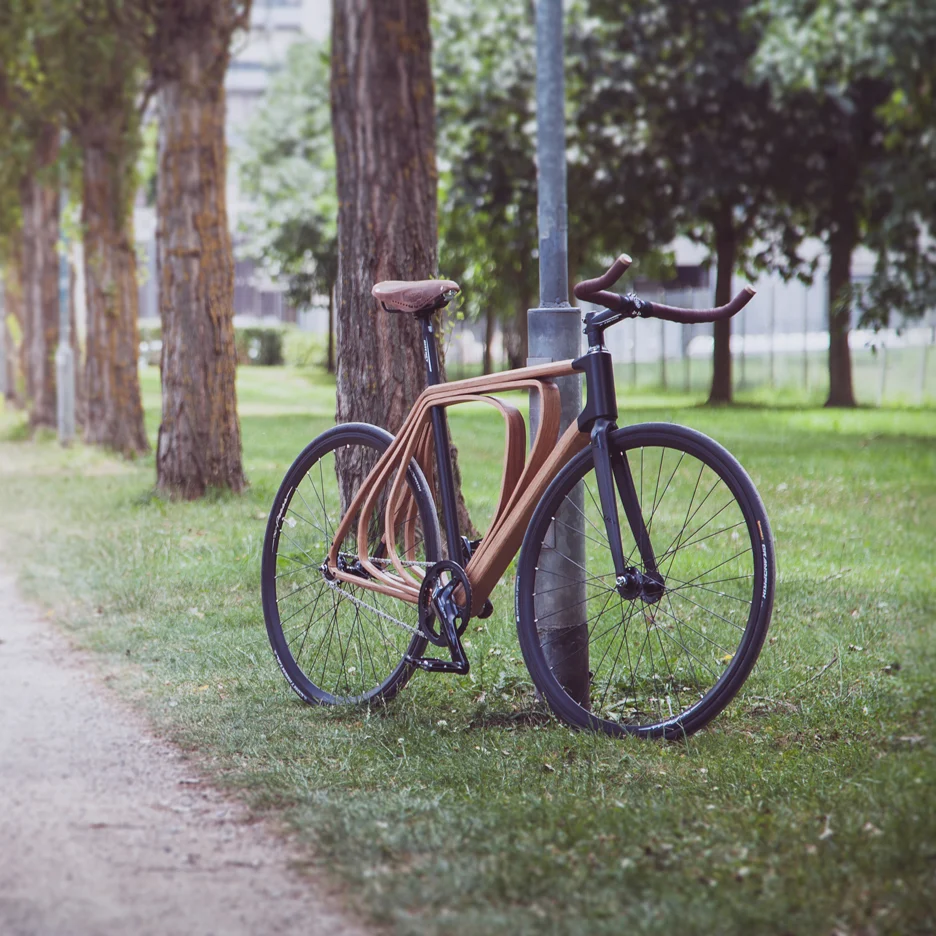I. Introduction to Wooden Bicycles

A. The Rebirth of Wood as a Bicycle Material
Wooden bicycles have undergone a remarkable resurgence in recent years, captivating cyclists and enthusiasts with their timeless aesthetic and sustainable appeal. Once overshadowed by modern materials, wood has made a remarkable comeback as a bicycle material due to its unique properties, craftsmanship, and environmental benefits.
B. Benefits of Wooden Bicycles
Wooden bicycles offer a myriad of advantages that have contributed to their growing popularity. From their natural shock-absorbing qualities and aesthetic appeal to their eco-friendly nature, wooden bicycles provide a distinct riding experience that is both practical and environmentally conscious.
C. Historical Significance of Wooden Bicycles
The historical significance of wooden bicycles dates back to the early days of cycling, with wooden frames being the primary material before steel and aluminum became prevalent. Exploring this rich history provides valuable insights into the evolution of bicycle construction and the enduring appeal of wooden bicycles.
II. Crafting Wooden Bicycles
A. Choosing the Right Wood for Bicycle Construction
Crafting a wooden bicycle begins with selecting the appropriate wood for the frame. While a variety of woods can be used, each with its unique characteristics, the selection process involves careful consideration of factors such as strength, weight, and flexibility to ensure the optimal performance and durability of the bicycle.
B. Traditional Techniques in Wooden Bicycle Crafting
The art of crafting wooden bicycles encompasses a range of traditional techniques. From steam bending and lamination to intricate joinery, these time-honored methods showcase the craftsmanship and attention to detail that are integral to the creation of wooden bicycles.
C. Modern Innovations in Wooden Bicycle Design
In addition to traditional techniques, modern innovations in wooden bicycle design have propelled the industry forward, blending traditional craftsmanship with contemporary technology. Advancements in wood processing, CAD modeling, and CNC machining have expanded the design possibilities and enhanced the precision and efficiency of creating wooden bicycle frames.
III. Riding Experience and Performance

A. Unique Riding Experience of Wooden Bicycles
Riding a wooden bicycle offers a truly distinctive experience, one that is intertwined with the natural characteristics of wood. The inherent shock-absorbing properties of wood provide a smooth and comfortable ride. And it makes it an enticing choice for cyclists seeking a unique and enjoyable journey. The flexibility of wood also contributes to a lively and responsive feel. The wood will create a connection between the rider and the natural material beneath them.
The acoustic qualities of wooden bicycles further enhance the riding experience, with the sound of the wood subtly resonating with the movement of the bike—a sensation that provides a deeper connection to the cycling process. These nuances combine to offer an immersive journey.
B. Durability and Stability of Wooden Bicycles
In the quest for sustainable transportation options, the durability and stability of wooden bicycles are often underestimated. Contrary to common misconceptions, a well-crafted wooden bicycle can exhibit outstanding longevity and robustness. When constructed with precision and utilizing high-quality wood, these bicycles manifest exceptional strength-to-weight ratios, ensuring both reliability and resilience.
Modern advancements in wood technology, such as laminating multiple layers of wood or utilizing high-performance hardwoods, have contributed to the enhanced stability and longevity of wooden frames. Moreover, the strategic placement of grain patterns and the meticulous application of protective coatings have been instrumental in fortifying wooden bicycles against the forces of nature and the rigors of the road, cementing their status as dependable and enduring rides.
C. Comparing Performance with Traditional Bicycles
The performance of wooden bicycles has often been a subject of curiosity and debate within the cycling community. In essence, wooden bicycles can offer comparable performance to traditional metal bicycles when engineered and constructed with precision. Wooden bicycles have demonstrated their capacity to meet and even exceed the performance metrics of their metal counterparts.
The versatility of wood as a material has allowed for the creation of wooden bicycles capable of delivering an exceptional power-to-weight ratio, responsive handling, and efficient energy transfer. As a result, riders can experience a high level of performance alongside the distinctive attributes.
IV. Environmental and Sustainable Aspects
A. Wooden Bicycles as an Eco-friendly Alternative
Wooden bicycles have garnered attention for their eco-friendly credentials, serving as a sustainable and environmentally conscious alternative in the realm of cycling. The use of wood as a primary material not only contributes to the reduction of carbon emissions associated with traditional metal bike manufacturing but also aligns with the principles of sustainability and conservation.
By choosing a wooden bicycle, riders are supporting a greener mode of transportation that embraces renewable resources and minimizes the environmental impact often associated with the production and disposal of conventional bicycles. This eco-friendly ethos extends beyond the act of cycling. It resonates with individuals seeking an environmentally responsible lifestyle and a deeper connection to the natural world.
B. The Process of Sustainable Wood Sourcing
The sustainable sourcing of wood is a pivotal aspect of ensuring the eco-friendly ethos of wooden bicycles. Responsible manufacturers prioritize the acquisition of wood from managed forests and sustainable sources, adhering to strict forestry standards and ethical harvesting practices. By embracing sustainable wood sourcing, these manufacturers partake in the preservation of forest ecosystems.
Forestry certifications provide assurances that the wood used in bicycle construction originates from managed harvested forests. By leveraging these certified materials, wooden bicycle manufacturers contribute to the preservation of forests and support the principles of sustainable development, thereby promoting the longevity of natural resources and the vitality of the planet.
C. Biodegradability and Eco-Impact
The biodegradable nature of wooden bicycles underscores their eco-friendliness and minimal environmental impact. At the end of a wooden bicycle’s lifecycle, its components naturally decompose. This innate biodegradability aligns with the principles of the circular economy.
V. Maintenance and Care
A. Tips for Maintaining Wooden Bicycle Integrity
Maintaining the integrity of a wooden bicycle is essential for its longevity and performance. Routine maintenance is key to preserving the bike’s structural integrity and visual appeal. Regularly inspecting the frame, ensuring that all components are securely fastened, and checking for signs of wear or damage can help prevent minor issues from escalating into more significant problems. Additionally, it’s important to follow the manufacturer’s guidelines for maintenance any concerns promptly to uphold the wooden bicycle’s integrity.
B. Protecting Wood from Environmental Elements
Protecting the wood of a bicycle from environmental elements is crucial to prolong its lifespan. Applying a high-quality protective finish, such as marine-grade varnish or specialized wood oils, helps shield the wood from moisture, UV radiation, and temperature fluctuations. Furthermore, storing the bicycle in a dry and sheltered environment when not in use can safeguard it from the detrimental effects of prolonged exposure to the elements, ensuring that the wood remains resilient and retains its natural beauty over time.
C. Repair and Restoration of Wooden Bicycles
In the event of minor damage or wear, prompt repair and restoration are essential to maintain the structural integrity and aesthetics of wooden bicycles. For minor scratches and dents, utilizing wood fillers or sanding and refinishing the affected areas can help restore the bike’s appearance. In the case of more significant damage, seeking the expertise of skilled craftspeople or specialists in wooden bicycle restoration can provide the necessary repairs to ensure the bike’s continued functionality and visual allure.
Conclusion:
In this modern age of advanced materials, the wooden bicycle stands out as a symbol of tradition, craftsmanship, and sustainability. Wooden bicycles continue to captivate and inspire both cyclists and enthusiasts. As we look ahead, the future of wooden bicycles holds promise for further innovation and an enduring connection to our heritage.

